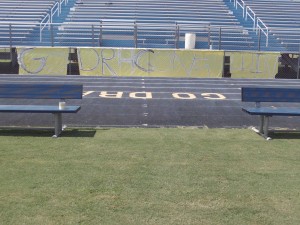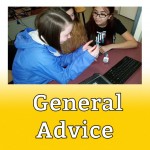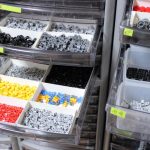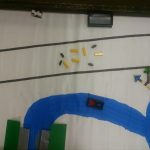
In our push to get more students involved in STEM subjects, we incorporated LEGO robotics into our high school Physics and our AP Physics 1 curricula. This meant that I had to develop a consistent way to assess my students, individually and collaboratively, as they planned, built, and programmed their robots.
Background
DeWitt School District is located in southeast Arkansas in the middle of the Grand Prairie. We are surrounded by rice, corn, and soy bean fields. We are the largest geographical school district in Arkansas with about 1300 students.
Farming is the major industry in our school district. There are several manufacturing companies, some of which use robotics in their processes. Aerial spraying companies have begun to use drones. As farming and farm-support businesses become more technologically advanced, our students need a variety of STEM related activities to foster an interest in science, technology, engineering, and mathematics. Members of the community, along with several local organizations, donated money to buy MINDSTORMS NXT kits to help promote STEM in our schools.
Groups
I found that three students in a group seemed to be the best arrangement. I tried four in a group but found there wasn’t enough work to keep four busy. I have tried various procedures in assigning members to groups, including drawing names, sorting by grades, and allowing them to choose their own groups.
Each group chooses a foreman, a secretary, and a materials manager. The foreman is the leader, keeping the group on task and focused. The secretary handles all the paperwork that needs to be turned in. The materials manager makes sure that the NXT kit is complete and finds any extra bits and pieces necessary to complete a build.
Assessment tools
I have developed a rubric for each job. As students work in their groups to complete a project, I wander around the room, observing each student at their task. I also observe the group dynamic as they plan, build, and program. I use my observations to assess each individual according to the rubric for their job. This is the individual grade for the project.
I have also developed a rubric to assess the final product. This provides a second grade for each individual for the project. I change this rubric as necessary to fit each project.
These rubrics are attached for your use. Change them or rearrange them to suit your particular needs. These rubrics can be used as formative and/or summative assessments.
- Foreman rubric (Word)
- Materials manager rubric (Word)
- Secretary rubric (Word)
- Robotics rubric (Word)
When projects are finished, I have each member of the group assess the efforts of their coworkers (confidentially) using an excellent rubric developed by Scipi that is available on teacherspayteachers.com.
Projects and activities
Our first project of the year is a banner written by our robots. Each group is assigned a letter in “GO DRAGONS WIN” and is assessed on their efforts using the rubrics I have developed.
We use our robots to reinforce speed and velocity. Students time their robots at three different power levels using a stop watch, ticker-tape apparatus, and Vernier photogates. We calculate speeds, graph distance vs. time, and compare the different timing procedures.
Students program their robots to make circles of varying sizes to study rotational speed.
Borrowing an idea from Damien Kee, we built a maze through which our robots must navigate any 4 of 5 ways: measurement, sound triggering, touch, light, and ultrasonically.
I am always looking for new robotic projects to reinforce physics, critical thinking skills, and collaboration.
We also do many builds that are not robotic. During our studies on projectile motion, students work in groups to build catapults and compete against each other. Students build paper and tape roller coasters to determine potential and kinetic energy. Groups also build skeletons from paper and tape. The lower part of the skeleton must bare 120 lbs without the knees buckling. The skull, built around a Florence flask, must remain intact when hit by a steel ball from our ballistics pendulum. This project addresses force, structural strength, and design.
Positives
I have found that my students improve their critical thinking skills using robotics and the other projects that I require. Students learn to collaborate and share ideas. The students’ interest in physics has dramatically increased with the addition of robotics. This year (2014-2015) I currently have 47 enrolled in AP Physics 1 and 10 in high school Physics. This represents over 30% of our junior and senior classes.
I have also started an after school robotics program for 9th and 10th graders through Delta Gear Up, a program funded and operated by our local community college. This program does not require student assessment.



Interesting stuff.
I was just wondering how you measured the growth of your students critical thinking skills?